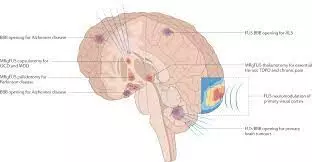
Researchers have found in latest research that Semaglutide can produce clinically meaningful weight loss and reduce waist size for at least 4 years in adults with overweight or obesity who don’t have diabetes, and delivers cardiovascular benefits irrespective of weight lost.
Two important studies based on the largest and longest clinical trial of the effects of semaglutide on weight in over 17,000 adults with overweight and obesity but not diabetes find patients lost on average 10% of their body weight and over 7cm from their waistline after 4 years.
Clinically meaningful weight loss was achieved by men and women of all races, ages, and body sizes, across all regions, with a lower rate of serious adverse events compared with placebo.
Over half of adults taking semaglutide moved down at least one BMI category after 2 years compared to 16% receiving placebo; and 12% reached a healthy BMI (25 kg/m² or less) compared with 1% in the placebo group.
Importantly, the findings also indicate that semaglutide delivers cardiovascular benefits irrespective of starting weight and the amount of weight lost-suggesting that even patients with mild obesity or those not losing weight are likely to gain some advantage.
Two important studies are being presented at this year’s European Congress on Obesity (ECO) in Venice, Italy (12-15 May), based on the landmark Semaglutide and Cardiovascular Outcomes (SELECT) trial from the same international author group. The first new study, led by Professor Donna Ryan from Pennington Biomedical Research Centre, New Orleans, USA, and being published simultaneously in Nature Medicine, examines the long-term weight effects of semaglutide. The second study led by led by Professor John Deanfield from University College London, UK, investigates whether the cardiovascular benefits are related to starting weight or the amount of weight lost.
Semaglutide is a GLP-1 medication primarily prescribed for adults with type 2 diabetes but is also approved for weight loss in people with obesity or overweight who have at least one other health issue. This class of medications simulate the functions of the body’s natural incretin hormones, which help to lower blood sugar levels after a meal. Adjusting these hormone levels can also make people feel full, and in doing so, helps lower their daily calorie intake.
In 2023, the SELECT trial reported that adults with overweight or obesity but not diabetes taking semaglutide for more than 3 years had a 20% lower risk of heart attack, stroke, or death due to cardiovascular disease, and lost an average 9.4% of their bodyweight [1].
Between October 2018 and June 2023, 17,604 adults (aged 45 or older; 72% male) from 804 sites in 41 countries with overweight or obesity (BMI of 27 kg/m² or higher) were enrolled and treated with Semaglutide (2.4mg) or placebo for an average of 40 months. They had previously experienced a heart attack, stroke and/or had peripheral artery disease, but did not have type 1 or type 2 diabetes when they joined the study.
The researchers examined markers of obesity that include body composition and fat distribution (waist circumference and waist circumference-to-height ratio [WHtR]), rather than just BMI alone, to help clarify the effect of semaglutide on central abdominal fat which has been proven to cause greater cardiovascular risk than general obesity.
Clinically meaningful weight loss in all sexes, races, body sizes, and regions
The first new study shows that once-weekly treatment with semaglutide can produce clinically meaningful and sustained weight loss and decrease waist size for at least 4 years in adults with overweight or obesity who do not have diabetes, with a lower rate of serious adverse events compared with placebo.
Importantly, men and women of all races, ages, and body sizes, across all geographical regions were able to achieve sustained, clinically meaningful weight loss.
“Our long-term analysis of semaglutide establishes that clinically relevant weight loss can be sustained for up to 4 years in a geographically and racially diverse population of adults with overweight and obesity but not diabetes,” says Professor Ryan. “This degree of weight loss in such a large and diverse population suggests that it may be possible to impact the public health burden of multiple obesity-related illnesses. While our trial focused on cardiovascular events, many other chronic diseases including several types of cancer, osteoarthritis, and anxiety and depression would benefit from effective weight management.”
In the semaglutide group, weight loss continued to week 65 and was sustained for 4 years, with participants’ losing on average 10.2% of their body weight and 7.7cm from their waistline, compared with 1.5% and 1.3cm respectively in the placebo group.
Similarly, in the semaglutide group, average WHtR fell by 6.9% compared with 1% in the placebo group.
These improvements were seen across both sexes and all categories of race and age, irrespective of starting blood sugar (glycaemic) status or metabolically unhealthy body fat. However, women taking semaglutide tended to lose more weight on average than men, and Asian patients lost less weight on average than other races.
Interestingly, after 2 years over half (52%) of participants treated with semaglutide had transitioned to a lower BMI category compared with 16% of those given placebo. For example, the proportion of participants with obesity (BMI 30kg/m² or higher) declined from 71% to 43% in the semaglutide group, and from 72% to 68% in the placebo group. Moreover, 12% of adults in the semaglutide group achieved a healthy weight (BMI 25kg/m² or less) compared with 1.2% in the placebo group
For each BMI category (<30, ≤30-<35, ≤35-<40, and ≥40 kg/m2) there were lower rates (events per 100 years of observation) of SAEs with semaglutide (43.23, 43.54, 51.0, 47.06) than with placebo (50.48, 49.66, 52.73, 60.85) respectively.
There were no unexpected safety issues with semaglutide in the SELECT trial. The proportion of participants with serious adverse events (SAEs) was lower in the semaglutide group than the placebo group (33% vs 36%), mainly driven by differences in cardiac disorders (11.5% vs 13.5%). More patients receiving semaglutide discontinued the trial due to gastrointestinal symptoms, including nausea and diarrhoea, mainly during the 20-week dose escalation phase. Importantly, semaglutide did not lead to an increased rate of pancreatitis, but rates of cholelithiasis (stones in gallbladder) were higher in the semaglutide group.
Cardiovascular benefits irrespective of weight loss
The second study examined the relationship between weight measures at baseline, and change in weight during the study with cardiovascular outcomes. These included time to first major adverse cardiovascular event (MACE) and heart failure measures.
The findings showed that treatment with semaglutide delivered cardiovascular benefits, irrespective of the starting weight and the amount of weight lost. This suggests that even patients with relatively mild levels of obesity, or those who only lose modest amount of weight, may have improved cardiovascular outcome.
“These findings have important clinical implications”, says Professor Deanfield. “Around half of the patients that I see in my cardiovascular practice have levels of weight equivalent to those in the SELECT trial and are likely to derive benefit from taking Semaglutide on top of their usual level of guideline directed care.”
He adds, “Our findings show that the magnitude of this treatment effect with semaglutide is independent of the amount of weight lost, suggesting that the drug has other actions which lower cardiovascular risk beyond reducing unhealthy body fat. These alternative mechanisms may include positive impacts on blood sugar, blood pressure, or inflammation, as well as direct effects on the heart muscle and blood vessels, or a combination of one or more of these.”
Despite these important findings, the authors caution that SELECT is not a primary prevention trial so that the data cannot be extrapolated to all adults with overweight and obesity to prevent MACE; and despite being large and diverse, it does not include enough individuals from different racial groups to understand different potential effects.
References:
1. Ryan, D.H., Lingvay, I., Deanfield, J. et al. Long-term weight loss effects of semaglutide in obesity without diabetes in the SELECT trial. Nat Med (2024). https://doi.org/10.1038/s41591-024-02996-7
2. Semaglutide can produce clinically meaningful weight loss and reduce waist size for at least 4 years in adults with overweight or obesity who don’t have diabetes, and delivers cardiovascular benefits irrespective of weight lost, European Association for the Study of Obesity, Meeting: European Congress on Obesity (ECO2024).




















